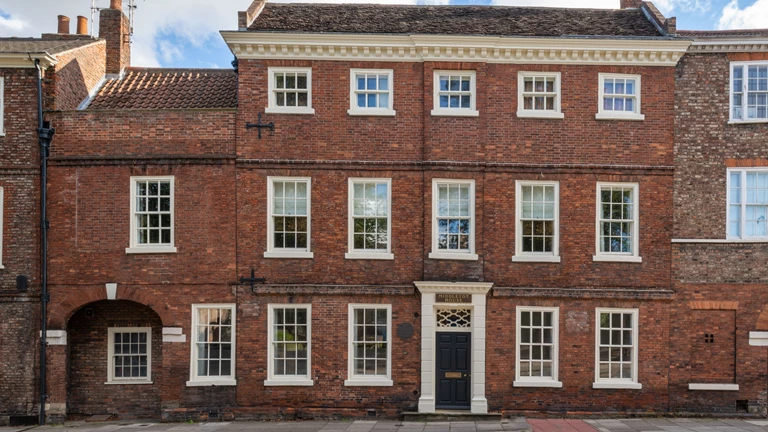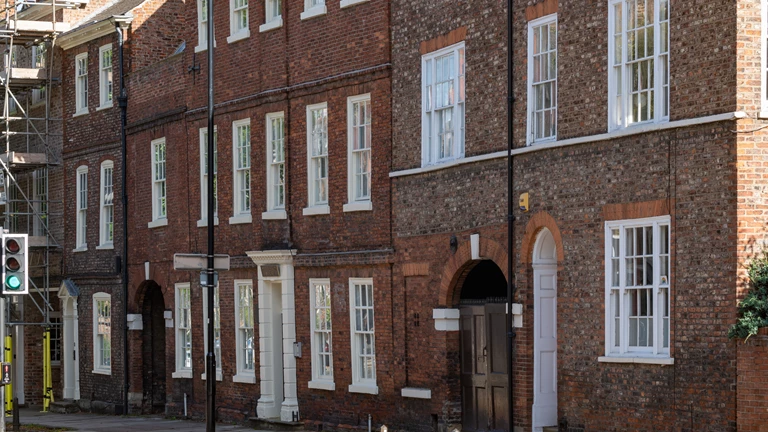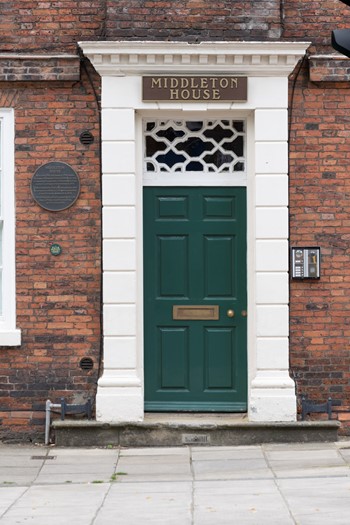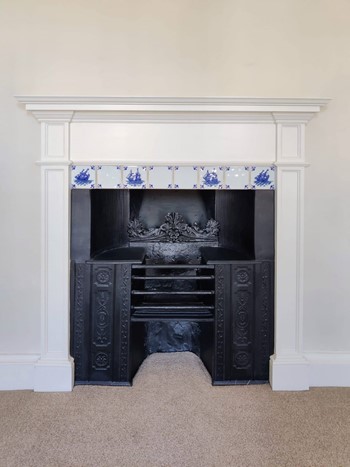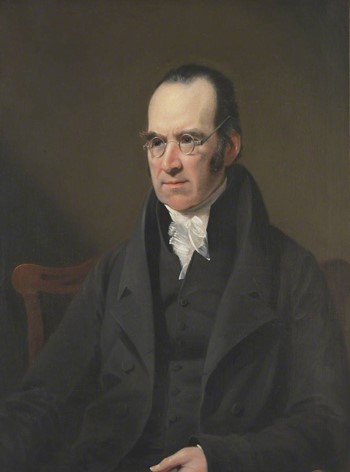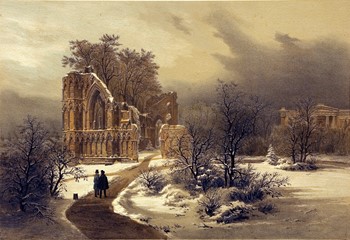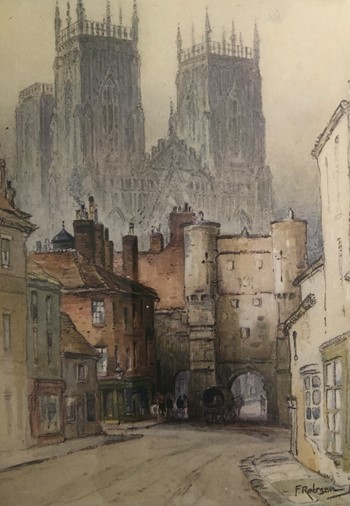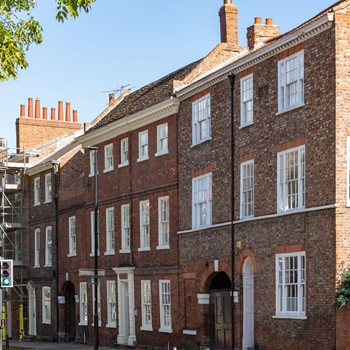Middleton House
Home of a leading dissenter, who established York’s reputation for world-class archaeological investigation.
The broad, stylish brick frontage of Middleton House on Monkgate is found on the approach to Monkgate Bar, an ancient and important eastern entrance into the City of York. Much of the importance of this building lies in its association with Charles Wellbeloved: Minister, dissenter and antiquarian who established York’s progressive reputation for archaeology.
In 100 AD the Romans called this gateway the Porta Decumana, meaning the rear gate of a Roman fort or camp. The name Monkgate appeared in 1075 reflecting the passage of the many monks who were attached to York Minster. The current impressive stone structure of the Bar, once complete with portcullis, dates from the 14th century.
An early 1611 map of York by John Speed shows dense development along both sides of Monkgate and, whilst the site of Middleton House was included, none of what we see today appear to date from that time. By the end of the 17th century, however, no. 38 Monkgate, now Middleton House, was part of three ‘messuages’ owned by Benjamin West. Later owners included John Preston and his family from 1738 to 1775 and his son William, who was probably responsible for the current design.
The front elevation has a symmetrical arrangement of three storeys with a two storey wing to the left, built over a carriage archway. Constructed in brick, in high-status Flemish bond, you’ll see brick stringer courses between floors. This building technique helped to direct rainwater away from the window recesses below. The current sash windows are largely replacements, although those in the attic storey, with their thicker glazing bars, are earlier examples.
A handsome central doorway, probably dating from the 1800s, has rusticated stucco pilasters and an unusual over light with a geometric glazing pattern.
The elliptical carriage arch to the left, with its later additions of chambers above, probably dates from the 1770s, whilst the recessed blocking of the arch is much later and dates from the late 1970s.
At the rear of Middleton House, the ordinance map of 1852 shows an extensive formal garden backing onto Love Lane and the curtilage of the County Hospital. It also adjoined a large Malthouse at the rear of no. 36 Monkgate.
Inside the building some original features have survived, including the main staircase rising from the entrance hall to the attic. The lower section has slightly later barley twist balusters, whilst the remainder have dumb-bell balusters, typical of houses built in York during the 17th century. Sadly, despite its Grade II* listing (only 6% of all listed buildings in the UK are designated at this level), many original features were removed in the 1970s when the building was used as offices. Just one fireplace, with composite decorations by John Wolstenholme of York, survives.
Much of this building’s historic importance comes from the occupation of the antiquarian, Charles Wellbeloved. Wellbeloved moved to York in 1798 to take up the role as Minister of St. Saviourgate Chapel, a post he held until his death in 1858.
A prominent Methodist, for around 10 years Wellbeloved also used his home as the centre for a dissenting educational academy known as Manchester College and a hub from which to further his interest in the ancient origins of York. Dissenter comes from the Latin dissentire (to disagree) and dissenters, although Protestant in approach, disagreed with the Church of England’s attitudes and doctrines. Amongst his many social and historical interests, in 1822 Wellbeloved was a founder member of the Yorkshire Philosophical Society (YPS) and accepted an honorary post as Curator of Antiquities.
Early on YPS drew up ambitious plans to have their own museum and research centre in York and acquired the land we know today as the Museum Gardens, together with guardianship of monuments on the site. Before the new museum building could begin construction, in 1827–9 Wellbeloved and the YPS undertook ground-breaking archaeological investigation in the ruins of St. Mary’s Abbey and later, in 1831, the Multangular Tower.
Also a Fellow of the Society of Antiquaries in London, Wellbeloved persuaded the YPS to produce and publish detailed records of their archaeological discoveries. This took the form of a blow-by-blow account in the popular Gentleman’s Magazine, which, along with the resultant folio book, provoked intense interest throughout the UK and around the world. The importance of what was probably the first ever fully documented archaeological excavation, ran to six editions and cannot be overstated: giving the YPS considerable kudos and establishing York as a centre for historical and scientific scholarship.
Wellbeloved continued to live at Middleton House until his death in 1858. The house was then home to the Rev. John Kenrick and other clerics until the middle of the 20th century. In later years the house was used as a working-men’s club and offices before being acquired by York Conservation Trust in 1990. Let to a firm of solicitors until 2009, after a few vacant years, the Trust converted the large building into five high quality apartments and, today, Middleton House is once again home to York residents.
Dating from the 1800s, the front door has rusticated stucco pilasters and an unusual over light with a geometric glazing pattern.
One surviving fireplace, with composite decorations by John Wolstenholme of York.
Charles Wellbeloved (1769–1858) by James Lonsdale (1777–1839) Harris Manchester College, University of Oxford
‘St. Mary’s Abbey and the Yorkshire Museum’ by Louis-Jules Arnout, c.1850. York Art Gallery
Monkgate Bar York c. 1920s, print by Featherstone Robson (1880 - 1936). Robson was commissioned to paint a range of cathedral scenes around the country. The popular prints sold widely around the country.

